한식 읽기 좋은 날
Vol 47. A New Day, Clean Color
Tteokguk Embracing Local Personality ─ Diverse Tteokguk Dishes Throughout the Country
Tasty Road
It is the new year. However, we cannot say our age with an added year.
It is only possible when we empty a bowl of tteokguk. To our people, tteokguk is not just a dish, but a culture and an identity, to the extent that it becomes a criterion for guessing one’s age.
Tteokguk is made with white tteok everywhere in the country to welcome a new beginning with a reverent mindset, but the taste and the shape vary by region. It is because the taste and the style of a particular region lent its personality to tteokguk.
Reference. Encyclopedia of Korean Seasonal Customs
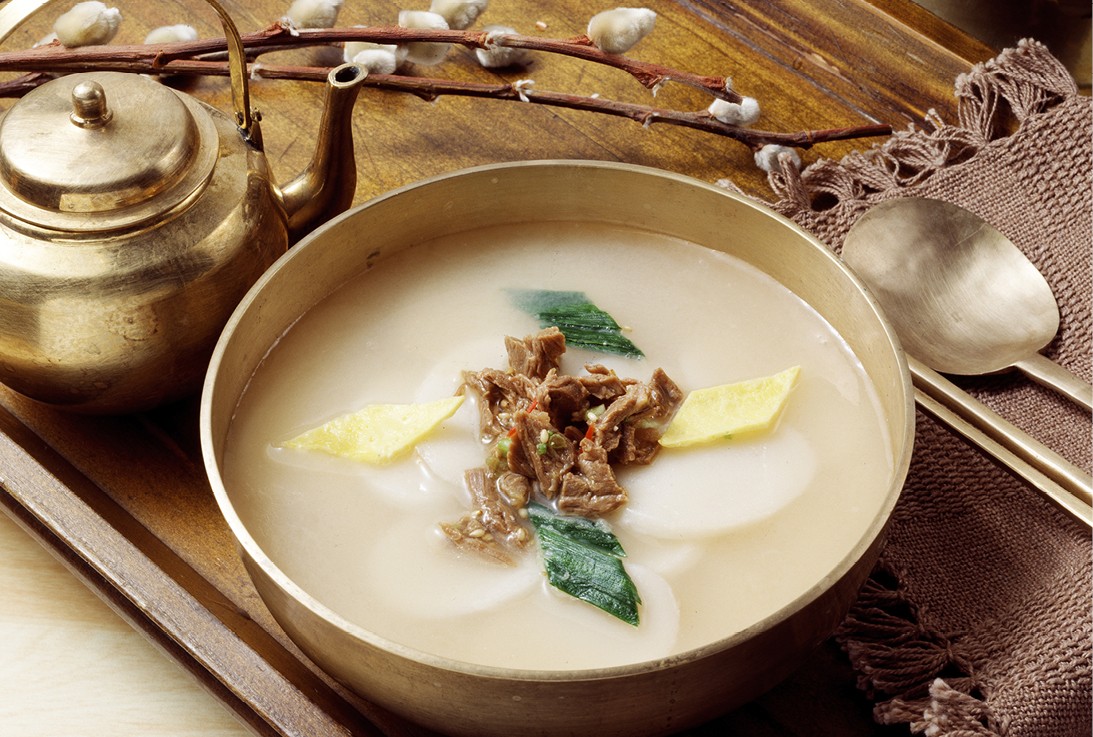
Gaeseong joraengi tteokguk Harmony of rich beef broth and chewy tteok
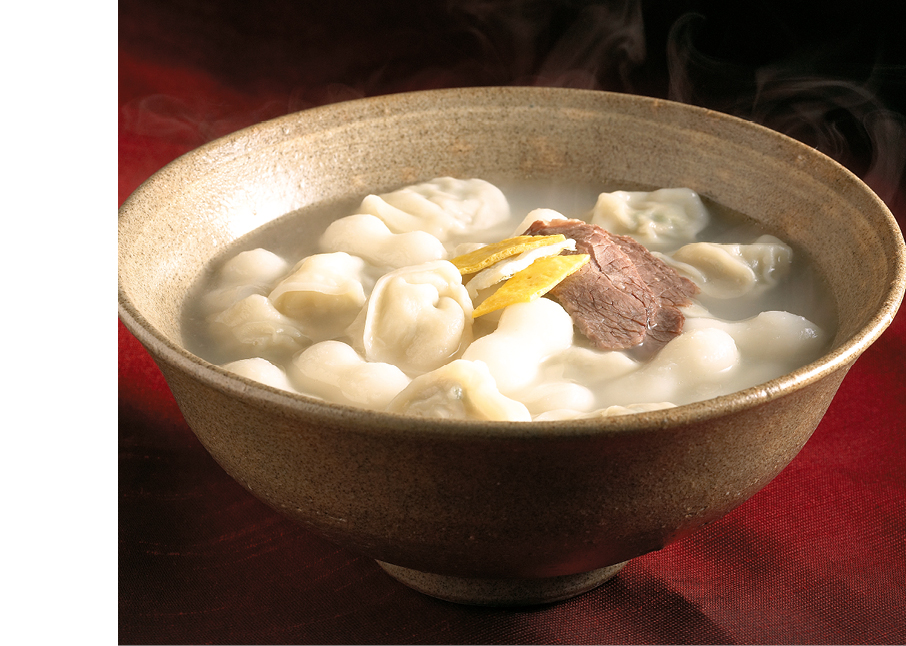 In the past, in Gyeonggi-do, including Seoul, people ate joraengi tteokguk. This is originally a New Year's dish from Gaeseong, Hwanghae-do, and is characterized by the shape of tteok in the dish that resembles a cocoon.
In the past, in Gyeonggi-do, including Seoul, people ate joraengi tteokguk. This is originally a New Year's dish from Gaeseong, Hwanghae-do, and is characterized by the shape of tteok in the dish that resembles a cocoon.
Joraengitteok is made by cutting thin, non-glutinous garaetteok(rice cake stick) into two finger joint-sized pieces, then applying sesame oil to the rice cakes and pressing the center with a bamboo knife to form the shape. The folklore behind this unique tteok shape is interesting. In addition to the theory that the name and the shape were taken from the gourd that was hung on the end of the jeogori(Korean traditional jacket) to prevent bad luck for children, and the one about wishing for all things in the new year to go smoothly like the thread of a cocoon, there is folklore that the people of Gaeseong, the capital of Goryeo, bore a grudge against Yi Seonggye, who destroyed Goryeo and established the Kingdom of Joseon, and expressed their resentment in the rice cake. It is also said that the people of Gaeseong, who were proficient in business even before the Goryeo Dynasty, saw the shape of the joraengitteok, which resembled a bunch of brass coins, and ate this dish as breakfast on New Year’s Day, as a way of wishing for wealth to overflow in their house.
The broth of joraengi tteokguk is made by boiling beef bones and brisket, and is seasoned with soy sauce. It is boiled again after adding tteok and is served in a bowl with marinated beef and egg garnish on top. Joraengi tteokguk, with its savory flavor of the beef broth harmonizing with a unique texture of joraengitteok, is among the three representative local dishes of Gaeseong, including Gaeseongmandu(Gaeseong-style dumpling) and bossamkimchi(wrapped kimchi).
Naltteokguk from Chungcheong-do Nutty taste enhanced by the soft texture of raw tteok
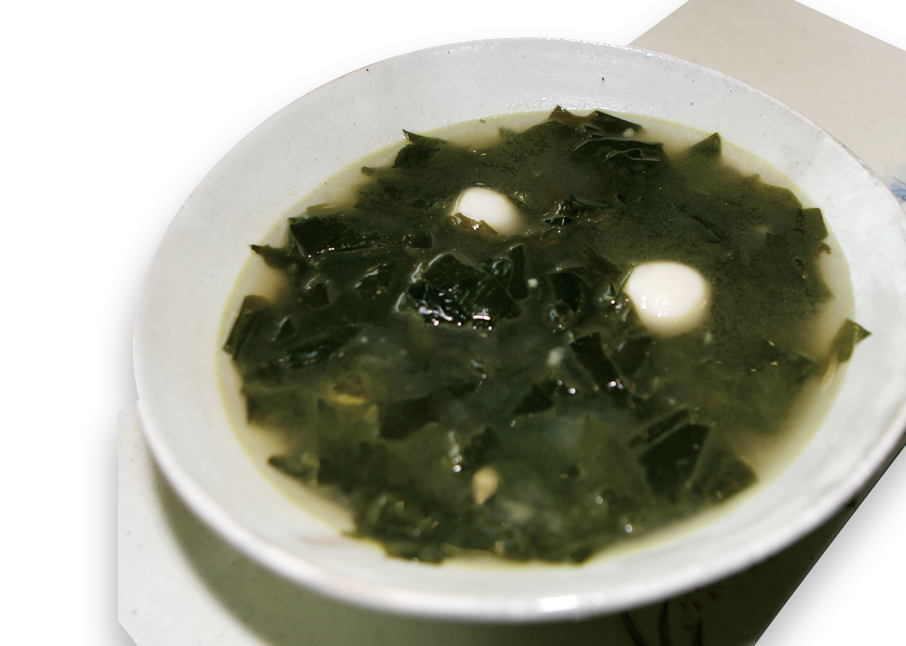 Since the ancient times, in the Chungcheong-do region, people mainly ate naltteokguk, which is made by making a dough with non-sticky rice flour and cooking it by putting the dough pieces into the broth like sujebi(hand-pulled dough soup). The tteok dough does not go through the steaming process like garaettok, so it was called “saeng(生: raw) tteok.” The dish is also called “saeng tteokguk,” meaning a tteokguk dish with this saengtteok. To make saengtteok, the non-sticky rice is ground finely, and pounded while adding some hot water. It is then rolled into a long, round shape, and cut diagonally. The reason for adding hot water when kneading is to add stickiness to the dough. Unlike wheat flour, rice flour does not have a high gluten content, so it is common to use hot water to make the dough with viscosity. This is the reason why other tteok, such as songpyeon(half-moon rice cake), are steamed after making the dough with hot water. Naltteokguk stimulates our palate with its soft texture, rather than the natural chewy texture of tteok.
Since the ancient times, in the Chungcheong-do region, people mainly ate naltteokguk, which is made by making a dough with non-sticky rice flour and cooking it by putting the dough pieces into the broth like sujebi(hand-pulled dough soup). The tteok dough does not go through the steaming process like garaettok, so it was called “saeng(生: raw) tteok.” The dish is also called “saeng tteokguk,” meaning a tteokguk dish with this saengtteok. To make saengtteok, the non-sticky rice is ground finely, and pounded while adding some hot water. It is then rolled into a long, round shape, and cut diagonally. The reason for adding hot water when kneading is to add stickiness to the dough. Unlike wheat flour, rice flour does not have a high gluten content, so it is common to use hot water to make the dough with viscosity. This is the reason why other tteok, such as songpyeon(half-moon rice cake), are steamed after making the dough with hot water. Naltteokguk stimulates our palate with its soft texture, rather than the natural chewy texture of tteok.
Naltteokguk is characterized by making a broth that is clear and refreshing with plenty of marsh snails, instead of beef, the typical broth ingredient. Also, even in the same Chungcheong-do region, the parts near the west coast, short-necked clams, seaweed, anchovies, etc., are used to make a refreshing broth, whereas, in the Chungbuk region, olgaengi naltteokguk is made by dissolving soybean paste in an olgaengi(snail) broth, and adding curled mallow to create a clean and nutty flavor.
Meanwhile, naltteokguk was consumed in Chungcheong-do as well as in Gyeongsang-do, and in Gyeongju, Gyeongsangbuk-do, while people ate naltteokguk on the early evening of the eve of Jeongwol Daeboreum(the first full moon of the new year) in addition to Seolnal. This is one of the seasonal dishes that is eaten to wish for a bountiful harvest for the year.
Dakjang tteokguk from Jeolla-do “Epitome” of chicken broth boasting a homely savory flavor
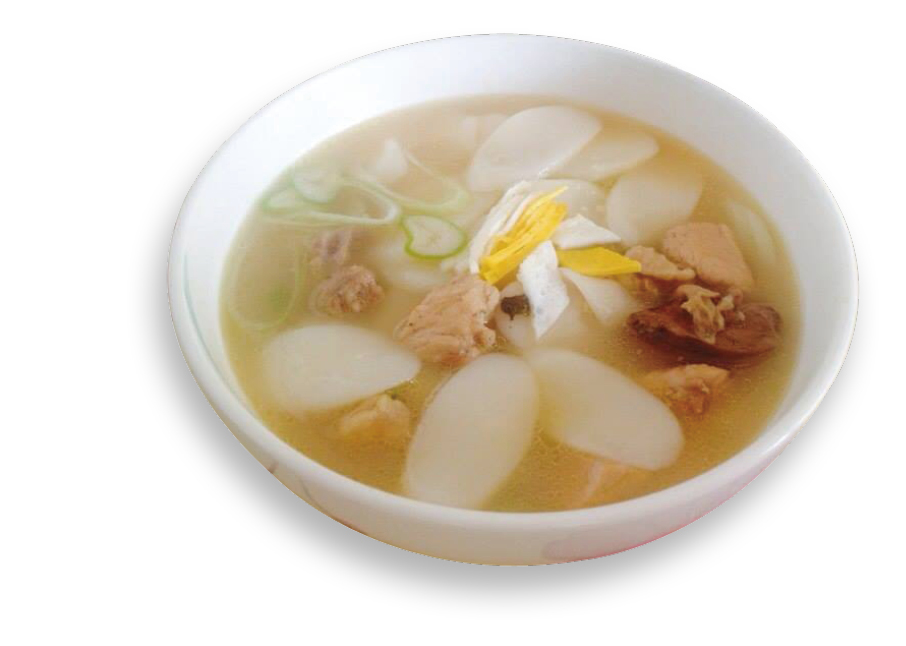 In Jeolla-do, people eat dakjang tteokguk with a broth made with chicken, instead of beef, on Seolnal. The expression, “chicken instead of pheasant,” is derived from this tteokguk dish. In the past, pheasant meat was the main ingredient for making broth for tteokguk. In the late Goryeo period, falcon hunting, which originated from the custom of the Yuan Dynasty, became an extravagant game for the nobles, tteokguk and mandutguk with a broth, and dumplings with pheasant meat filling made with the pheasant captured by the falcon were also regarded as high-class food. However, it was difficult to obtain pheasant meat without falcon hunting, so ordinary people made tteokguk with chicken instead of pheasant meat.
In Jeolla-do, people eat dakjang tteokguk with a broth made with chicken, instead of beef, on Seolnal. The expression, “chicken instead of pheasant,” is derived from this tteokguk dish. In the past, pheasant meat was the main ingredient for making broth for tteokguk. In the late Goryeo period, falcon hunting, which originated from the custom of the Yuan Dynasty, became an extravagant game for the nobles, tteokguk and mandutguk with a broth, and dumplings with pheasant meat filling made with the pheasant captured by the falcon were also regarded as high-class food. However, it was difficult to obtain pheasant meat without falcon hunting, so ordinary people made tteokguk with chicken instead of pheasant meat.
To make dakjang tteokguk, the chicken is first cut into bite-sized pieces, and then braised with soy sauce. This braised dish is called “dakjang.” When the soy sauce is simmered down, place it in a cold place to let it harden, then take as much as you need, add tteok, pour water, and boil to make dakjang tteokguk.
It is easy to make, but the broth is rich in the savory homely flavors of chicken. In addition to tteokguk, dakjang is very versatile as it can be used in miyeokguk(seaweed soup), etc., providing a rich flavor.
Gultteokguk from Gyeongsang-do A bowl brimming with the fresh scent of Namhae
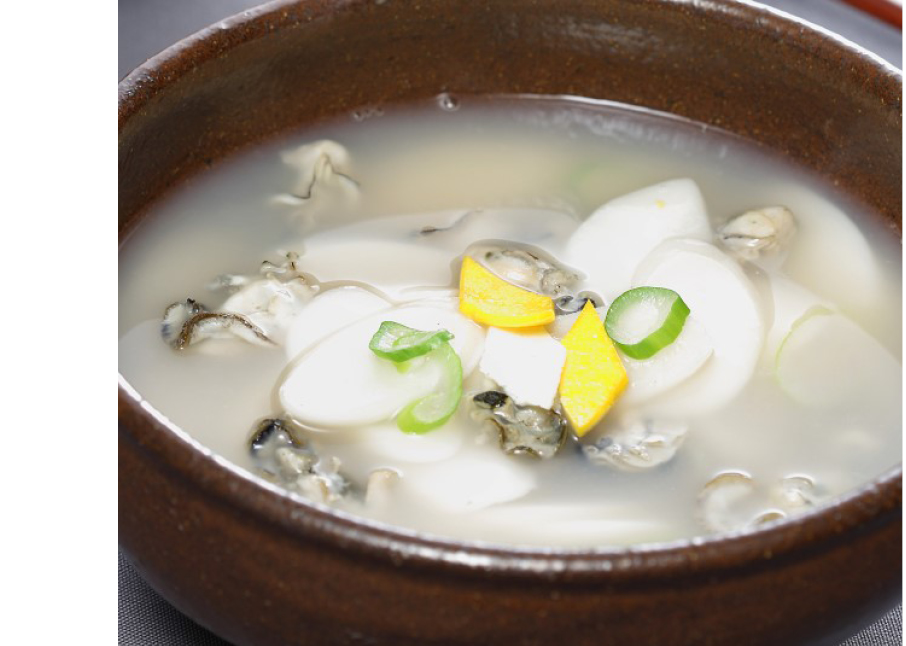 In Gyeongsang-do, which has the southern sea as its kitchen, the New Year is celebrated with gultteokguk(oyster rice cake soup) with chewy oysters. The broth is made clean with anchovies and kelp, instead of beef, and thinly sliced garaetteok is added and boiled. Later, oysters and bean curd are added, and then it is seasoned with gukganjang(soy sauce for soup), and served with egg garnish and laver flakes that is full of the flavors of the sea.
In Gyeongsang-do, which has the southern sea as its kitchen, the New Year is celebrated with gultteokguk(oyster rice cake soup) with chewy oysters. The broth is made clean with anchovies and kelp, instead of beef, and thinly sliced garaetteok is added and boiled. Later, oysters and bean curd are added, and then it is seasoned with gukganjang(soy sauce for soup), and served with egg garnish and laver flakes that is full of the flavors of the sea.
Gultteokguk, which is full of Namhae(south sea) flavors, is considered to have the unique refreshing taste of seafood. Since oysters are in season in the winter, you can enjoy its chewy texture and rich nutrition to the fullest. The chewiness of tteok is added, and it is sure to awaken the eater’s palate.
When making gultteokguk, you need to be careful in cleaning the oysters. Rather than rinsing with tap water, shake lightly in salt water to enjoy the unique flavor of oysters. Depending on your preference, you can enjoy a richer flavor by adding seafood, such as shrimp or clams. Gultteokguk is a local food eaten mainly in Tongyeong, Gyeongsang-do, and it was also eaten in parts of Jeolla-do, which faces the sea.

 한국어
한국어
 English
English






